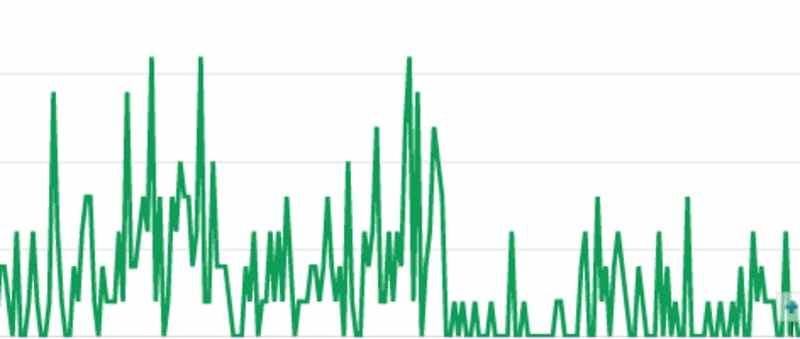YouTube, the popular video-sharing platform, has been experiencing a decline in its revenue. This declining trend has raised concerns about the sustainability of YouTube’s business model.
The platform has faced challenges due to changes in advertisement policies, the rise of ad-blocking software, competition from other platforms, demographic shifts, and the introduction of YouTube Premium. These factors have contributed to YouTube’s declining revenue, necessitating a closer look at the platform’s strategies for revenue growth.
Changes in advertisement policies
YouTube has made several changes to its advertisement policies, which have had an impact on revenue. These changes include adjustments in monetization requirements, making it harder for some creators to earn money from ads. Moreover, YouTube faced ad boycotts in the past due to brand safety concerns, which led to a decrease in ad revenue. These policy updates have shifted the landscape for monetization on the platform.
Adjustments in monetization requirements
YouTube has introduced stricter requirements for monetization on its platform. Creators now need to have at least 1,000 subscribers and 4,000 watch hours in the past 12 months to be eligible for ad revenue. This change aims to improve content quality and reduce spam, but it has made it harder for some creators to earn money from ads.
Impact of ad boycotts and brand safety concerns
Ad boycotts and brand safety concerns have had a significant impact on YouTube’s revenue. Major advertisers have pulled their ads from the platform due to instances of their content appearing alongside inappropriate or extremist material.
This has not only resulted in a loss of revenue from these advertisers but has also damaged YouTube’s reputation and made other brands wary of advertising on the platform. YouTube has taken steps to address these concerns, such as implementing stricter content guidelines and offering advertisers more control over where their ads appear, but the impact of these boycotts and concerns lingers.
Rise of ad-blocking software
The rise of ad-blocking software is another key reason behind YouTube’s decreasing revenue. With the growing popularity of ad-blockers among internet users, a significant number of viewers are able to bypass YouTube’s advertisements. This directly translates to a loss of ad impressions and ultimately impacts the platform’s ad revenue.
Additionally, ad-blockers make it harder for YouTube to monetize its content and makes it difficult for advertisers to reach their target audience effectively.
Growing popularity of ad-blockers among internet users
Ad-blockers have gained significant popularity among internet users. These browser extensions and software block ads from being displayed on websites, including YouTube.
According to a study by eMarketer, it is estimated that 30% of internet users globally use ad-blockers. This means that a large portion of YouTube viewers are bypassing advertisements, leading to a decrease in ad impressions and ad revenue for the platform.
How ad-blockers adversely affect YouTube’s ad revenue
Ad-blockers have had a significant impact on YouTube’s ad revenue. These software and browser extensions block advertisements from appearing on websites, including YouTube. As a result, a large portion of YouTube viewers are bypassing ads, leading to a decrease in ad impressions and ultimately a decline in ad revenue for the platform. This has forced YouTube and advertisers to find new ways to reach their audience and generate revenue.
Competition from other platforms
Competition from other platforms has also played a role in YouTube’s decreasing revenue. The emergence of alternative video-sharing platforms has given advertisers and content creators more options to reach their target audience.
Additionally, YouTube has faced challenges in retaining advertisers and creators due to concerns over demonetization and limited ad inventory. This has forced YouTube to adapt and find new ways to attract and retain both advertisers and creators.
Emergence of alternative video-sharing platforms
The emergence of alternative video-sharing platforms has provided advertisers and content creators with more options to reach their target audience. Platforms like TikTok, Instagram Reels, and Snapchat Discover have gained popularity, attracting a significant portion of YouTube’s user base. This increased competition has led to a decline in YouTube’s revenue as advertisers and creators explore other platforms to reach their audience.
YouTube’s struggle to retain advertisers and creators
YouTube has faced challenges in retaining advertisers and creators due to various factors. The platform’s changing advertisement policies, including adjustments in monetization requirements and brand safety concerns, have led some advertisers to explore alternative platforms.
Additionally, the rise of competing video-sharing platforms and changes in user behavior have made it more difficult for YouTube to maintain its audience and retain creators.
These factors have contributed to the decline in YouTube’s revenue as advertisers and creators seek alternative platforms that better align with their needs and target audience.
Demographic shifts and changing user behavior
Demographic shifts and changing user behavior have also played a role in YouTube’s decreasing revenue. The target audience for YouTube has shifted over the years, with younger generations being drawn to social media platforms and short-form video apps.
As a result, YouTube has had to adapt to these changing preferences and compete for the attention of its audience, which has impacted its ability to retain users and advertisers.
Additionally, the rise of these platforms has led creators to explore other avenues for content creation, further challenging YouTube’s revenue growth.
Shifts in the target audience and their preferences
Shifts in the target audience and their preferences have contributed to YouTube’s decreasing revenue. Younger generations have gravitated towards social media platforms and short-form video apps, leading to a decline in the platform’s appeal to this demographic. YouTube has had to adapt to these changing preferences and compete for their attention, which has impacted its ability to retain both users and advertisers.
Influence of social media and short-form video platforms
The increasing influence of social media and short-form video platforms has played a significant role in YouTube’s decreasing revenue. Younger generations are more drawn towards platforms like TikTok, Instagram, and Snapchat, which offer quick, easily consumable content.
These platforms compete for users’ attention, leading to a decline in YouTube’s appeal among this demographic.
Additionally, social media platforms have also improved their monetization strategies and offer advertising opportunities, providing more options for advertisers to engage with their target audience.
YouTube Premium and its impact

YouTube Premium, a subscription-based service offered by YouTube, has had a significant impact on the platform’s revenue. Despite its positive contribution, monetizing premium content has its challenges. While YouTube Premium offers an alternative revenue source, it is necessary for the platform to focus on addressing the key factors contributing to the decline in revenue.
Analysis of YouTube Premium’s contribution to revenue
YouTube Premium has had a significant impact on YouTube’s revenue. With a subscription-based model, it offers an alternative revenue source that can help offset the decline in ad revenue. However, the exact contribution of YouTube Premium to the platform’s revenue is not publicly disclosed. Nonetheless, the service has the potential to drive growth and diversify YouTube’s revenue streams.
Challenges faced in monetizing premium content
One of the challenges YouTube faces in monetizing premium content is the need to convince users to pay for a subscription. With free content readily available, convincing users to switch to a paid subscription can be difficult.
Additionally, competition from other streaming platforms and the availability of pirated content pose further challenges in monetizing premium content.
Conclusion
In conclusion, YouTube’s decreasing revenue can be attributed to a combination of factors. Changes in advertisement policies, the rise of ad-blocking software, competition from other platforms, and shifts in user behavior have all contributed to the decline. While YouTube Premium has helped generate revenue, monetizing premium content remains a challenge. Moving forward, YouTube needs to address these challenges and explore new strategies to boost revenue growth.
The decreasing revenue of YouTube raises concerns about its future sustainability. To combat this decline, YouTube needs to develop effective strategies to attract advertisers and creators, enhance brand safety measures, and improve user experience.
Implementing innovative ad formats, investing in original content, and leveraging data analytics to personalize recommendations can help drive revenue growth in the future.
Additionally, exploring partnerships with influencers and expanding into emerging markets can further expand YouTube’s revenue opportunities.







